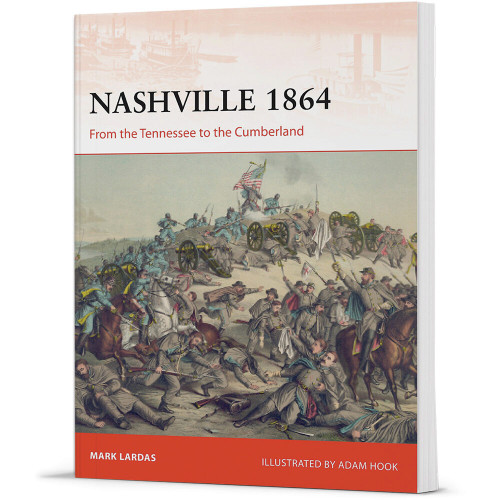The Atlanta Campaign, 1864: Sherman's Campaign to the Outskirts of Atlanta
The campaign for Atlanta was pivotal to the outcome of the American Civil War. Roughly 190,000 men waged war across northern Georgia in a struggle that lasted 133 days. Today a national park at Kennesaw commemorates this titanic fight, and there are a surprising number of physical reminders still extant across the state.
The struggle for Atlanta divides naturally into two stages. The first half of the campaign, from May to mid-July, can be defined as a war of maneuver, called by one historian the "Red Clay Minuet." Under Joseph E. Johnston the Confederate Army of Tennessee repeatedly invited battle from strong defensive positions. Under William T. Sherman, the combined Federal armies of the Cumberland, the Tennessee, and the Ohio repeatedly avoided attacking those positions; Sherman preferring to outflank them instead. Though there were a number of sharp, bloody engagements during this phase of the campaign, the combats were limited. Only the battles of Resaca and Kennesaw Mountain could be considered general engagements.
Johnston's repeated retreats and the commensurate loss of terrain finally forced Confederate President Jefferson Davis to replace him with a more aggressive commander—John B. Hood.
This work will portray the first half of the Atlanta Campaign in text and images, using both historic sketches and photographs, as well as post-war and modern images. Extant trenches, rifle pits, redoubts, shoupades, and other works, as well as the battlefields, will be covered, as well as surviving historic structures and the monuments and cemeteries that commemorate the campaign.
Features
- 128 pages
- Over 100 illustrations
- Dimensions are 7" W by 10" H
- Hardcover
The campaign for Atlanta was pivotal to the outcome of the American Civil War. Roughly 190,000 men waged war across northern Georgia in a struggle that lasted 133 days. Today a national park at Kennesaw commemorates this titanic fight, and there are a surprising number of physical reminders still extant across the state.
The struggle for Atlanta divides naturally into two stages. The first half of the campaign, from May to mid-July, can be defined as a war of maneuver, called by one historian the "Red Clay Minuet." Under Joseph E. Johnston the Confederate Army of Tennessee repeatedly invited battle from strong defensive positions. Under William T. Sherman, the combined Federal armies of the Cumberland, the Tennessee, and the Ohio repeatedly avoided attacking those positions; Sherman preferring to outflank them instead. Though there were a number of sharp, bloody engagements during this phase of the campaign, the combats were limited. Only the battles of Resaca and Kennesaw Mountain could be considered general engagements.
Johnston's repeated retreats and the commensurate loss of terrain finally forced Confederate President Jefferson Davis to replace him with a more aggressive commander—John B. Hood.
This work will portray the first half of the Atlanta Campaign in text and images, using both historic sketches and photographs, as well as post-war and modern images. Extant trenches, rifle pits, redoubts, shoupades, and other works, as well as the battlefields, will be covered, as well as surviving historic structures and the monuments and cemeteries that commemorate the campaign.






